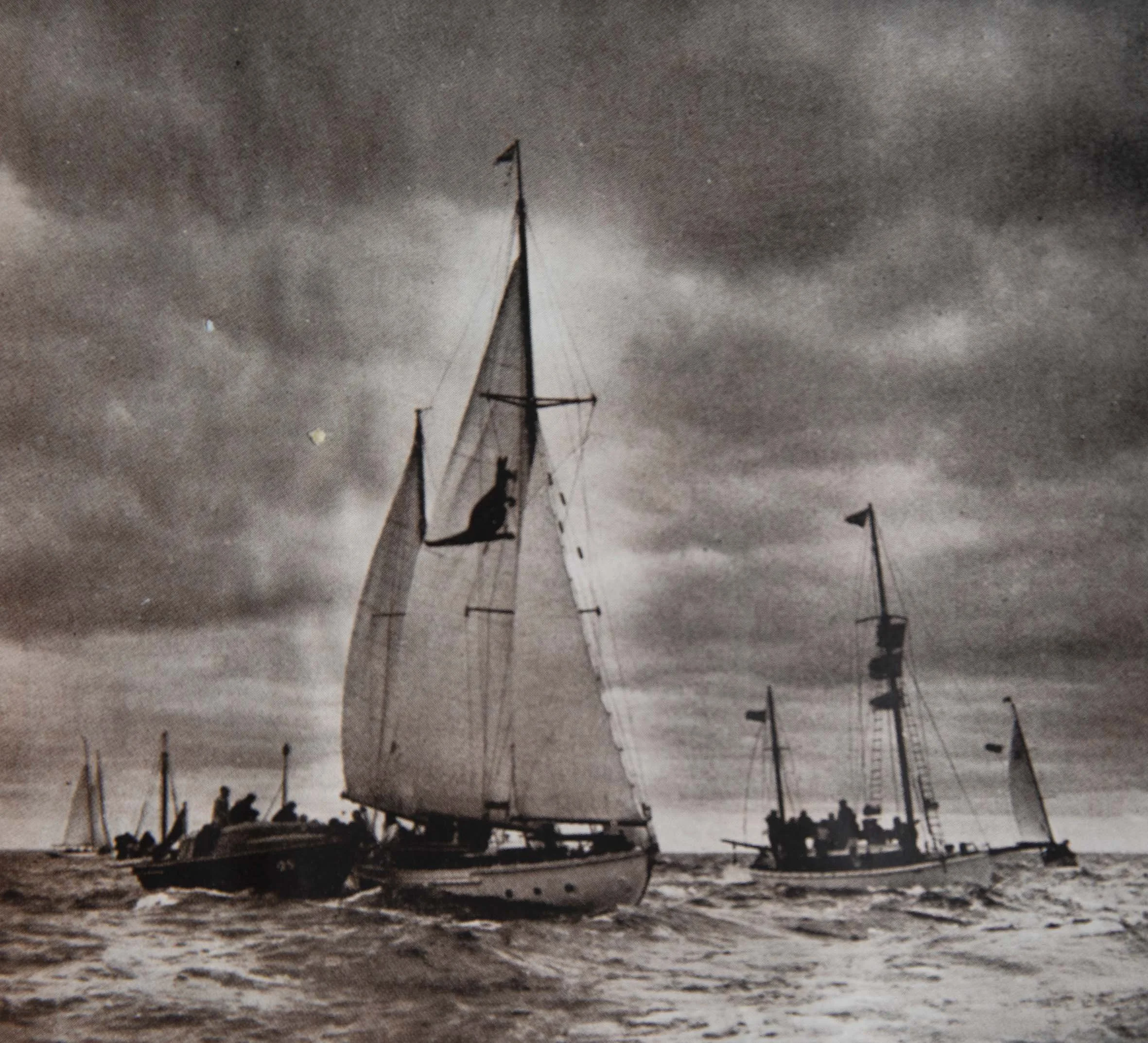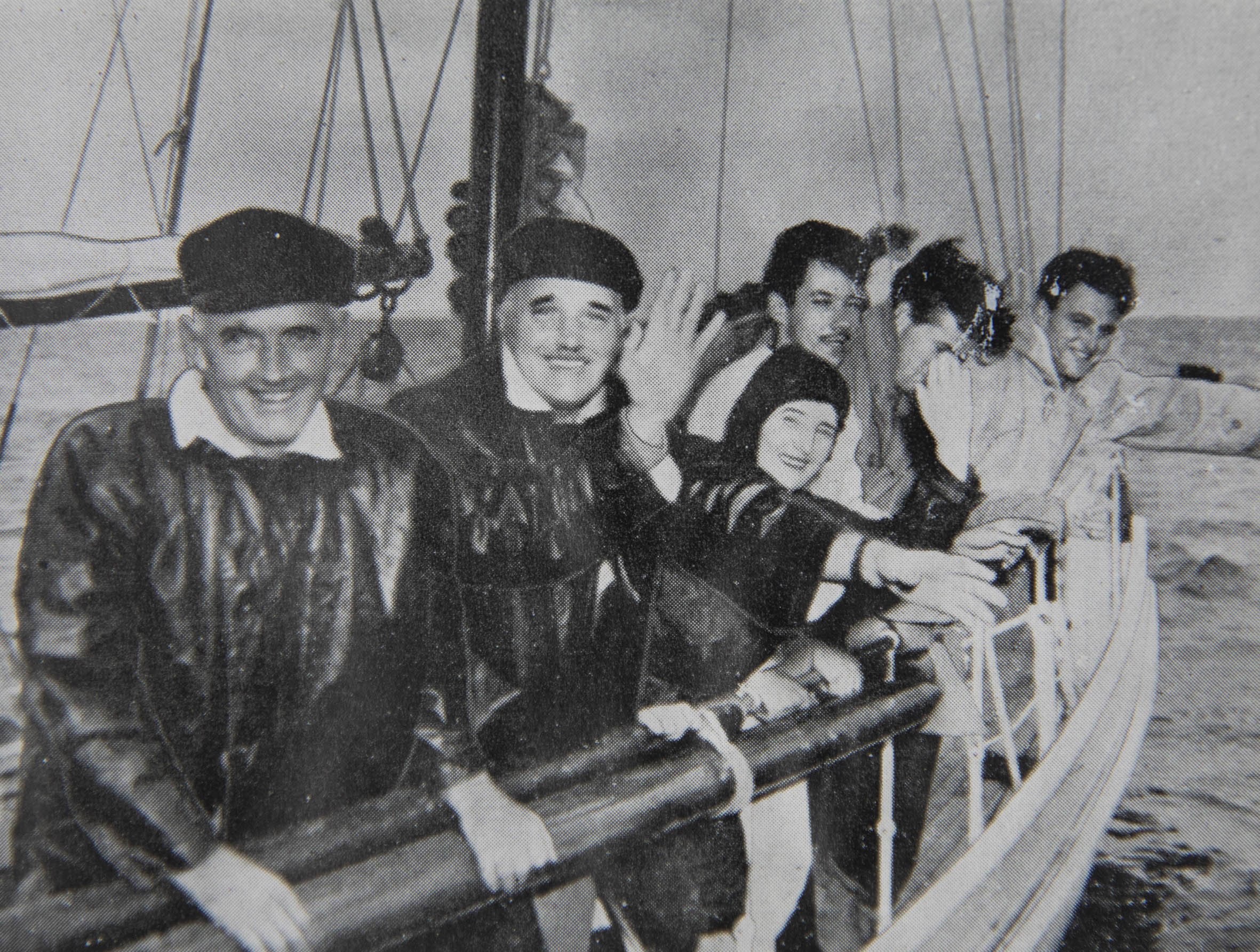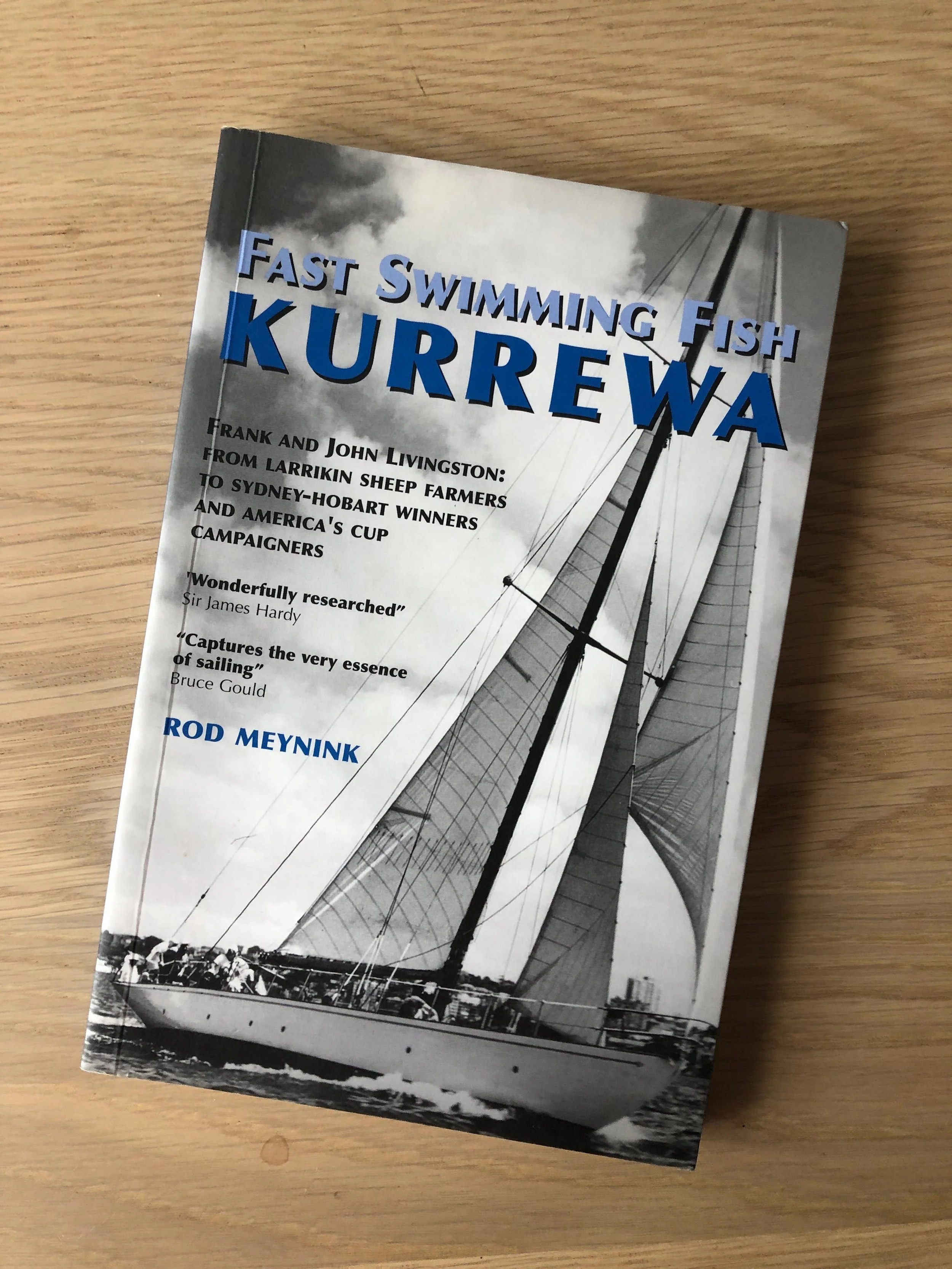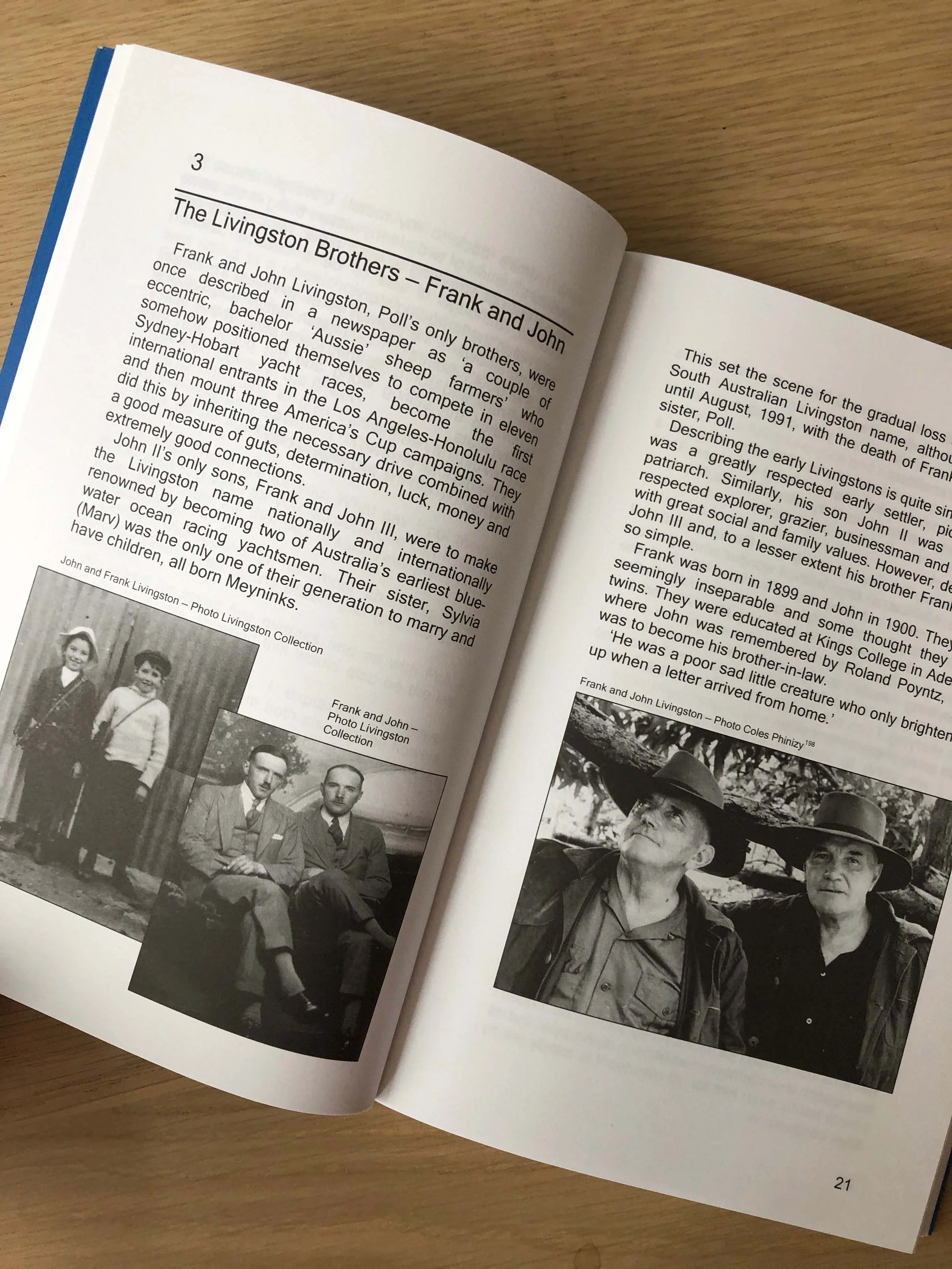Niche Publishing 73 years on.
One of our loyal supporters at SWS, Roger Dundas, (custodian of AVIAN) showed up a few weeks ago with a pile of magazines that he had rescued from the belongings of the late Doug Jenkin. Roger is a generous man and was helping with the difficult job of cleaning up the clutter of a lifetime of maritime interests.
He thought the publications might be of interest to SWS readers and we think he’s right. So over the next few months we will publish excerpts from the 1950’s and 60’s editions “Port of Melbourne Quarterly”. It’s a dry masthead title for a rich and beautifully produced magazine.
Above is the cover of the January-March Edition of 1950.
The strangely prescient explanatory note inside reads…
Bewilderment …anticipation… hope. These are the emotions of newcomers typified in this delightful picture by Herald photographer Frank Howe. Mr. Calwell said of the photo: ‘It is one of the finest I have ever seen. It has an important national value and must make all proud of Australia's immigration achievements.” The Ukrainian family group are amongst our recent new Australians to enter through the Port of Melbourne.
Another of the articles inside this issue is entitled “KURREWA III Comes Home”
Remember the language used is now seventy years old and forgive a few of the outdated attitudes. Otherwise it’s a great yarn!
KURREWA III Comes Home
By Peter Howell
The storms and savage moods of the Pacific held no fears for the Livingston brothers, their sister and gallant crew. They sailed their yacht, the ketch rigged KURRAWA III fromthe Port of Melbourne halfway around the world and returned with a story of adventure. almost unbelievable.
Never before in the history of Australian yachting has so much been achieved by one yacht in such a short time. When KURRAWA III-a 22 tonne yacht, owned by the Livingston brothers, South Australian graziers-arrived back in Melbourne early in November, she had completed a journey which had taken her across the Pacific to America and back to Australia.
Since she left her berth at Gem pier in the Port of Melbourne six months earlier, KURRAWA III and her crew sailed to San Francisco calling in at Auckland, Rimitara and Tahiti, (Pacific islands), Honolulu, and then on to Los Angeles. During her stay at Los Angeles, KURRAWA III underwent a few minor refits before setting out in the Trans-Pacific yacht race, the most arduous in the world.
KURRAWA III was the first Australian yacht to attempt the 2200 mile race from Los Angeles to Honolulu. While away she flew the burgee of the Royal Yacht Club of Victoria.
The yacht was built in 1929 in South Australia, and it was not until 1946 that she was brought by Frank Livingston after seeing service during the War on Thursday Island. She is 56 feet long draws seven feet when fully loaded, and is Bermuda rigged.
KURRAWA III’s Australian crew were Frank Livingston, owner and skipper, John Livingston, mate, Emily Livingston, cook, Alan Bath, Bill Mitchell, and Frank Lush and when the yacht called at Auckland, New Zealanders Harry Podmore, Bill Gordon, and Terry Hammond joined the crew.
When KURRAWA III sailed from Melbourne last April many yachting officials did not think she would survive the journey to America and return. They should not have worried as the crew and the yacht had had experience in all types of seas and weathers.
The Livingstons had already raced their yacht twice in the Sydney Hobart yacht race, once to Sydney from Auckland, and once in the Hobart to Auckland race.
KURRAWA III also holds the record for the crossing under sail from Sydney to Auckland when she survived a hurricane. Her time for this trip was 10 days.
The details of the 20,000 mile journey is a story that can be told again and again and it still will have an appeal. Whether the reader is a fair weather sailor or a ninety year old master mariner, who has served his time under sail.
Voyage Begins
Leaving Melbourne late in the afternoon of April 19. KURRAWA III sailed as far as Sorrento at the entrance to Port Phillip heads where she lay for the night before starting on her trans Tasman crossing. The adventurers’ hopes were nearly wrecked overnight when the mooring lines snapped. John Livingston tried to get the yacht to safety but could not start the engine. After a frantic inspection, the breakdown was repaired.
The next morning KURRAWA III passed through the heads and more trouble! She had not been in the Tasman for more than two days before she ran into a cyclone. Anyone who sailed across the Tasman knows that there is nothing more fearsome than the disturbances in this patch of sea. Waves crashed onto the little craft and her crew while they manned the pumps. The helmsman was lashed to the wheel, while other members of the crew blistered their hands as they manned the pumps for hours on end.
However, the luck of the KURRAWA III held the skipper ordered the crew to down sail and to set out 60 fathoms of line in an effort to steady the craft in the terrific seas.
After the voyage was over, Frank Livingston admitted that “it was a bad night indeed.” Thirteen days after leaving Melbourne KURRAWA III reached Auckland, and seven days later the yacht left for Rimitara after having repairs made to her weather beaten and damaged hull and rigging.
Then the long hop from New Zealand to Tahiti via Rimitara. This was completed without any undue excitement. KURRAWA III averaged 180 miles a day, but nevertheless it took 22 days to make the trip.
At Tahiti minor repairs were made to the rigging after Frank Livingston had discovered that two of the cross-tree fittings on the mast were nearly broken in two.
On May 24th KURRAWA III left for Honolulu, arriving on 17th June. It had taken 40 days to reach this mid-Pacific outpost. After leaving Honolulu on June 9th KURRAWA III still had 2000 miles to go before she would reach Los Angeles in time for the big race, which was due to start on July 4th.
Owing to the prevailing winds, the boat had to be kept on a course, which was taking it northerly and away from Los Angeles. However, on June 18th, the wind changed and the Livingston's were able to turn eastward. On the way across the Pacific to Los Angeles. KURRAWA III again ran into some heavy weather, which carried away the boom as the crew were trying to '“down the spinnaker”. The falling boom knocked Bill Gordon unconscious.
KURRAWA III arrived at Los Angeles on the afternoon of June 27th. John Livingston told newspaper reporters at Los Angeles “we raced all the way here and we are mighty glad to have the trip behind us. The last leg of the trip from Honolulu was tough.”
For the next week, life for the crew was work from dawn till dusk. Everything had to be in readiness for the start of the race on Independence Day.
At last the great day dawned and we were up at 5:30am. “Our luck did not hold for the start of the race”, said Frank Livingston. “The wind was worst possible dead ahead and light”.
At the start of the race. The 84ft sloop WINDWARD collided with KURRAWA III just before crossing the start line. Fortunately, the damage was not severe.
KURRAWA III and four other yachts were becalmed for 16 hours at the start, just out of Los Angeles harbour. At midday, after the race had started, the wind improved. Things went fairly quietly for the crew for the great part of the race back to Honolulu.
Once the spinnaker was carried away, and on another night a squall blew the spinnaker out at the peak. The crew had to drag it out from under the keel of the boat. The best day’s sailing for the trip was made when they sailed 202 miles on 11th June. The average was nearly 180 miles a day.
When KURRAWA III was still 274 miles from Honolulu reports were received that other boats had already crossed the finishing line.
KURRAWA III, Australia's first and only entrant in the great Trans Pacific Race was the 16th boat to finish.
As she entered Honolulu harbour soon after midnight on 16th July she was given a great reception by the yachts already there. She was flood-lit in a blaze of searchlights and cheered by everyone who waited up for KURRAWA III’s arrival.
On the return journey to Australia, the yacht’s skipper Frank Livingston dislocated his right arm at the shoulder when he dived over the side of his boat for a swim. The craft was about 12 hours sailing time from Palmyra- a small island in the Pacific.
When KURRAWA III reached the island, an American Navy plane was waiting to take the injured man to Pago Pago for treatment.
On 1st September the yacht, now under the command of John Livingston, reached Pago Pago. A week later the boat left the island and continued on its way back to Melbourne.
The trip back to Australia was full of troubles, but the luck of the KURRAWA held, and on 12th November she entered Port Phillip Bay on the last stage of her journey home.
As she sailed up the bay on Sunday, 13th November from her overnight anchorage at St. Leonards, nearly 150 Yacht sailed out to meet her.
Six miles down the bay the Lord Mayor of Melbourne, (Cr Disney), the Chairman of the Melbourne Harbour Trust, and Commodore of the Sandringham Yacht Club, (Mr. A.D. Mackenzie) joined KURRAWA III to offer the hand of welcome to the gallant skipper and crew of this fine Australian craft as she completed the last stage of the voyage back to Melbourne. The Port Signal Station flew the gay signal…. “The Port Authority welcomes you home, well done!”
Later at the rooms of the Royal Yacht Club of Victoria, the commodore of the Club, (Dr F. H. Moran) presented the Livingstons with a silver punchbowl on behalf of the members of the Club in recognition of their yacht’s performance in the race.
At the presentation, the Lord Mayor (Cr Disney) told the crew of the yacht that they “had done Australia a lot of good and that adventurous trips like yours are a great advertisement for this country.”
Said Mr McKenzie, “The crew has brought prestige to both Australia and Australian yachtsman and we are very proud of you.”
(Click to enlarge)
The Book “fast Swimming Fish” as recommended by Harry Leggett in the comments section












